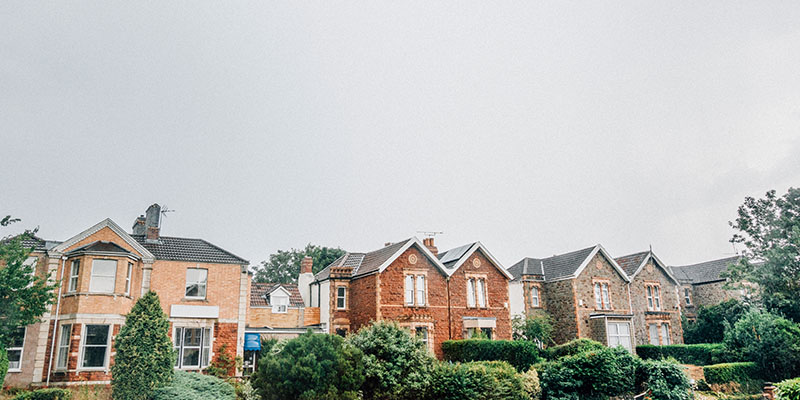
Why are Homes Across England Badly Insulated?
Homes across England are constantly being questioned by their poor insulation standards. Asking the right questions about your home’s insulation may not always provide the best answers but will tell you what condition your home is in, what you are doing right and what you are missing out on. But we must ask, why are homes across England badly insulated in the first place?
Depending on your home and energy consumption, you can save upwards of £700 by having your home effectively insulated. England, in comparison to its European neighbours, has one of the worst home insulation rates, leading to the drastic effects of over-consuming energy, increases in fuel-poverty households and even a greater strain on the NHS as people fall ill.
Housing in England
Homes built pre-1925 mainly consisted of solid external walls (as opposed to the more standard external cavity wall present today). These types of walls make it typically more difficult to insulate due to it being more expensive in comparison to filling up a cavity wall. Thus, this factor is partly responsible for poorly insulated walls across homes in England.
It is estimated that 2.5 million families suffer from fuel poverty, being unable to keep a consistent internal temperature due to being a low-income household. Another reason for this substantial figure may be due to the fact that pre-1990, energy efficiency design was not regulated, effective a majority of houses.
Significantly, according to the Climate Change Committee, around ¼ of the UK’s total greenhouse gas output stems directly from energy used in our homes, public buildings or workplaces. By investing in effective insulation, we can significantly cut the countries greenhouse emissions to a much more sustainable figure.
However, there is hope, the UK has announced a net-zero target by 2050, aiming to eliminate all harmful emissions from the atmosphere, this will look at making buildings greener, via sustainable design and insulation.
How can you Save with Insulation?
When deliberating about home insulation, we must look in the following areas:
- Roof
- External Walls
- Floors
- Windows
- Doors
Depending on your type of home, whether it is a detached house, semi-detached house, mid terrace or bungalow, your insulation costs and savings will vary. However, no matter your type of property, having effective insulation installed in the right areas will contribute to reducing your energy consumption and your energy bills every month.
This data generated by the Energy Saving Trust perfectly depicts how you can save money and in what areas of your property.
| |
|
Detached House |
Semi Detached House |
Mid Terrace |
Bungalow |
|---|---|---|---|---|---|
| Loft Insulation |
Cost |
£395 |
£300 |
£285 |
£375 |
| |
Savings (£/Year) |
£240 |
£140 |
£135 |
£200 |
| Loft Insulation Top Up |
Cost |
£310 |
£250 |
£240 |
£295 |
| |
Savings (£/Year) |
£25 |
£15 |
£15 |
£20 |
| Cavity Wall Insulation |
Cost |
£720 |
£475 |
£370 |
£430 |
| |
Savings (£/Year) |
£275 |
£160 |
£105 |
£110 |
| External Wall Insulation |
Cost |
£5,000 – £18,000 |
£5,000 – £18,000 |
£5,000 – £18,000 |
£5,000 – £18,000 |
| |
Savings (£/Year) |
£455 |
£260 |
£175 |
£180 |
| Internal Wall Insulation |
Cost |
£3,000 – £14,000 |
£3,000 – £14,000 |
£3,000 – £14,000 |
£3,000 – £14,000 |
| |
Savings (£/Year) |
£455 |
£260 |
£175 |
£180 |
| Solid Floor Insulation |
Cost |
£950 – £2,200 |
£950 – £2,200 |
£950 – £2,200 |
£950 – £2,200 |
| |
Savings (£/Year) |
£70 – £90 |
£40 – £55 |
£30 – £40 |
£65 – £80 |
| Wood Floor Insulation |
Cost |
£300 – £750 |
£300 – £750 |
£300 – £750 |
£300 – £750 |
| |
Savings (£/Year) |
£75 – £95 |
£45 – £55 |
£30 – £45 |
£65 – £85 |
Moreover, we can break down the areas of home insulation and see how important they are to insulate.
- Roof Insulation – 25% of heat loss
- External Wall Insulation – 35% of heat loss
- Floor Insulation - 15% of heat loss
- Window Insulation – 10% of heat loss
- Door Insulation – 15% of heat loss
Knowing these figures can help you plan and prepare your property to be insulated in the best way possible that suits you. Knowing how much heat is lost through different areas of your home can allow you to know where you feel you can improve your insulation and how much you can possibly save by doing so.


